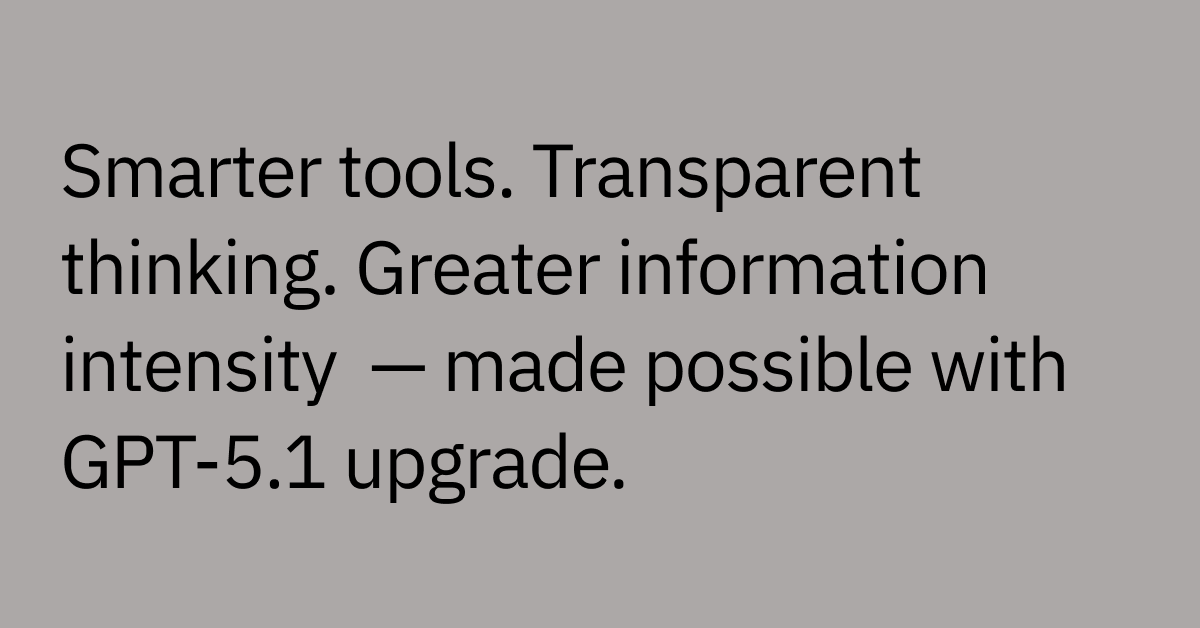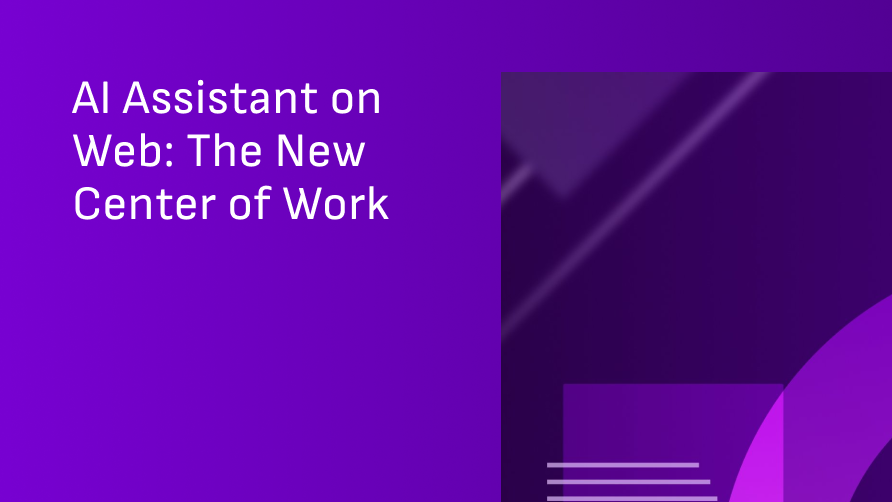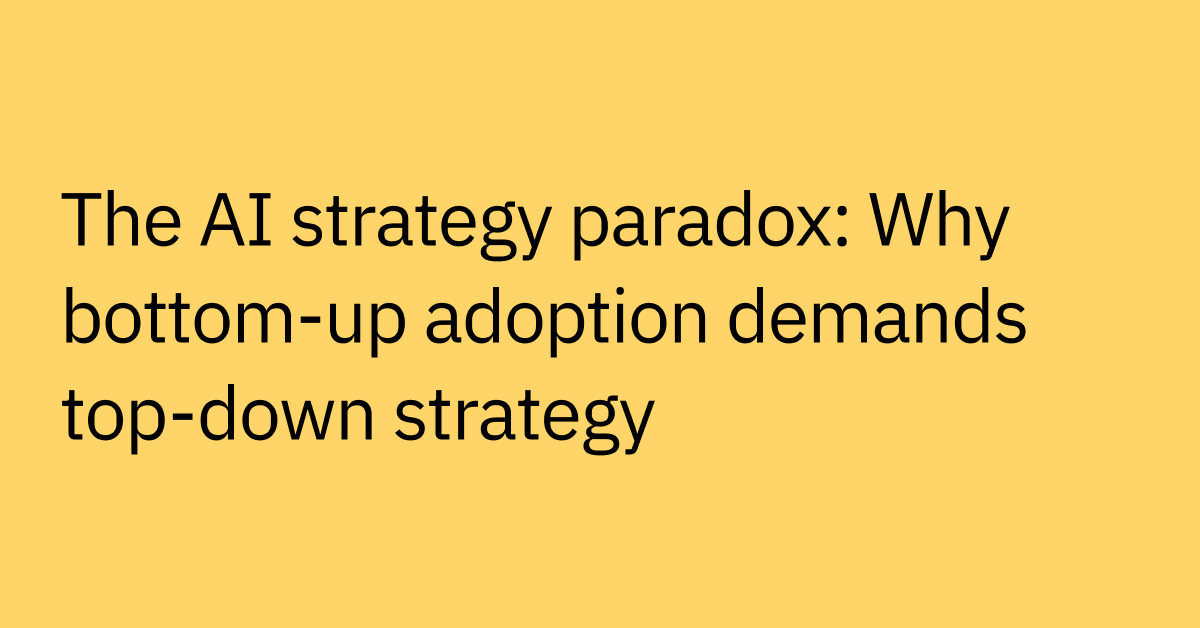Generative AI has taken the enterprise by storm. In just two years, genAI tools have gone from experiments on the edges of the business to active deployments at massive scale.
According to MIT’s recent report The GenAI Divide: State of AI in Business 2025, 40% of enterprises have deployed genAI tools, investing a staggering $30–40 billion in this technology. On the surface, this looks like a generational shift in how work gets done.
But here’s the uncomfortable truth: most of these deployments aren’t moving the numbers that matter and leaders are left wondering, where’s the ROI?
Despite the staggering billions invested into genAI by enterprises, the MIT GenAI Divide report reveals a surprising and stark reality: only 5% of genAI pilots return millions in value. The rest?
The report shows that 95% of organizations are getting zero measurable returns from their genAI initiative.
They’re either trapped in pilot purgatory or delivering only intangible productivity gains—useful, but hard to measure on a balance sheet.
But the reason might not be what you think, according to Moveworks President and Co-founder, Varun Singh. "Adoption isn’t the problem; impact is," he explained.
Individual productivity ≠ transformation
GenAI is great at words. It can draft, summarize, and synthesize with superhuman speed. And yes, that boosts productivity. An analyst gets back 30 minutes. A marketer saves an hour on research. A developer shortcuts documentation.
But productivity improvements at the task level don’t automatically roll up to profit and loss (P&L). Unless AI is tied directly to revenue generation, cost reduction, or risk avoidance, those saved minutes disappear into the noise of the workday.
What’s missing is translation from productivity to transformation. “If you say, ‘we want to adopt AI,’ of course you’re set up for failure," said Saanya Ojha, Partner, Bain Capital Ventures. "What metric are you trying to move? What outcome are you trying to achieve?”
Without deep context, secure integrations, and enterprise guardrails, most genAI pilots stay stuck at surface-level outputs instead of driving structural change. But that doesn't work, according to Varun. “An example is building AI into workflows—not relying on tribal knowledge,” he said.
Why genAI pilots stall out
There’s a common perception that the biggest things holding back AI impact are model quality, legal concerns, messy data, security risks. Yet MIT research shares that what’s really holding it back impact is that most AI tools don't learn. They don’t integrate well into workflows, either. “Start with a narrowly scoped problem," Saanya suggests. "Unless AI is built into the systems people already use every day, it won’t last.”
Think about a typical enterprise workflow. It doesn’t live neatly in one system—it bounces across IT, HR, Finance, Sales, and beyond. Yet most genAI pilots operate in silos. They’re built around single use cases (“help me write faster,” “summarize this ticket”) rather than end-to-end processes.
That’s why the ROI gap persists:
- A tool can summarize a contract but can’t push it through approvals
- It can draft an HR policy but can’t enforce compliance in Workday
- It can triage an IT ticket but can’t reset the password or fix the VPN
So instead of reducing costs or accelerating outcomes, genAI becomes an intelligent—but isolated—assistant. MIT’s research shows the result: surface-level adoption without measurable value.
How to cross the chasm
Enterprises don’t just need smarter tools. They need adaptive, context-aware AI platforms that integrate into real workflows and learn over time – which is exactly what Moveworks provides.
Here are four things that companies achieving true AI ROI do differently:
Make adoption frictionless. The best AI is invisible. Moveworks is embedded directly into existing channels (Slack, Teams, web browser, mobile) that employees already use, making it easy to adopt, and intuitive to enable uptake.
Continuously improve with feedback. AI should get smarter with interaction. The Moveworks Reasoning Engine is built on a flexible architecture, rigorously benchmarked, and constantly upgraded with the most advanced LLMs and agentic AI—whether from Moveworks or other innovators.
Partner with specialized vendors. MIT found enterprises are 2x more likely to fail when they build internally versus buying from specialized AI vendors. Moveworks is an AI-first company that is proud to support over 350 org-wide deployments worldwide, bringing pre-built integrations, proven governance, and expertise to 10% of the Fortune 500.
Look at vendor track records. Don’t just chase “productivity enhancers.” Demand case studies that show measurable business outcomes—reduced support costs, faster resolution times, or improved retention. If they can’t show past ROI, they won’t deliver it for you. Scope your problems narrowly," Saanya advises. "Incremental changes compound; moonshots may not convert.”
MIT's findings are validated by the results we're seeing with our customers:
- Databricks saw savings equivalent to $1.5 million dollars
- Broadcom was able to add tens of thousands in headcount without growing their support team
- Coca-Cola Consolidated grew their employee count by 3x in 5 years with the same number of agents
- West Monroe saw a 40% cost reduction in 1 year, saving $1.4M in ticket services
These aren’t productivity hacks—they’re structural changes with P&L impact.
In short, genAI tools may be the consumer winners. But enterprise transformation will only come from context-aware, integrated AI platforms that adapt, learn, and deliver measurable business outcomes. “Moveworks does dynamic context management—rebuilding context each step to avoid self-corroding memory, Varun explained.
Agentic AI and the narrowing window
Agentic AI is built for the enterprise. Unlike generative text engines that only produce words, Agentic AI understands intent, takes action, and proves its value. It’s designed to:
- Grasp deep context — interpret intent, remember history, and use enterprise data to tailor responses.
- Take real action — integrate across systems like ServiceNow, Workday, and Salesforce to resolve issues end-to-end.
- Provide enterprise guardrails — enforce compliance, permissions, and security so adoption can scale safely.
- Measure continuously — show ROI in real time on cost savings, retention, and employee engagement. Varun explained it like this: "If it doesn’t touch P&L or experience, it’s a vanity pilot.” Vanity pilots typically don't drive ROI.
MIT warns the adoption window for agentic AI is narrowing. Enterprises are already locking in adaptive, learning-capable platforms. Once embedded into workflows, these systems create high switching costs—meaning late adopters risk being locked out of the competitive advantage.
The next wave is agents that won’t just respond to requests; they’ll coordinate with one another, negotiate outcomes, and orchestrate work across the internet itself. Standards like Model Context Protocol (MCP), NANDA, and other emerging protocols will form the backbone of this new layer.
The choice is stark. Companies that cling to static, prompt-driven AI platforms could end up falling behind, trapped with brittle tools.
Those who embrace adaptive, integrated AI now won’t just keep pace—they’ll be able to own the future of enterprise transformation.
The bottom line: Crossing the genAI Divide
Most genAI pilots today are productivity boosters, not business transformers.
They help knowledge workers write faster, but they don’t rewire how the enterprise operates—which is why 95% of them fail to deliver measurable ROI.
The enterprises that win won’t be the ones with the most copilots, prompts, or proofs of concept. They’ll be the ones that reimagine AI as a business engine, not just a writing tool.
That’s exactly where Moveworks comes in.
We’ve spent years building AI that doesn’t just boost productivity, it also lets enterprises deploy AI agents tailored to their workflows—closing the gap between productivity pilots and true business transformation.
Our platform is context-aware, integrates seamlessly with systems like ServiceNow, Workday, and Salesforce, and continuously learns from user feedback.
That’s why companies like Broadcom, Databricks, and Coca-Cola Consolidated trust Moveworks to reduce support costs, accelerate resolution times, and deliver measurable P&L impact.
As Saanya put it: “AI investments have gone from vitamins to painkillers.” At Moveworks, we see that shift every day: enterprises no longer view AI as an experiment, but as essential infrastructure for impact. Movework turns that urgency into outcomes, grounding every action and answer in real business context to deliver measurable ROI.
Productivity may be the first inning, but transformation is the ballgame—and Moveworks is built to help enterprises cross the genAI divide.
Discover true AI ROI. Get a personalized Moveworks demo and find out how.
Table of contents



